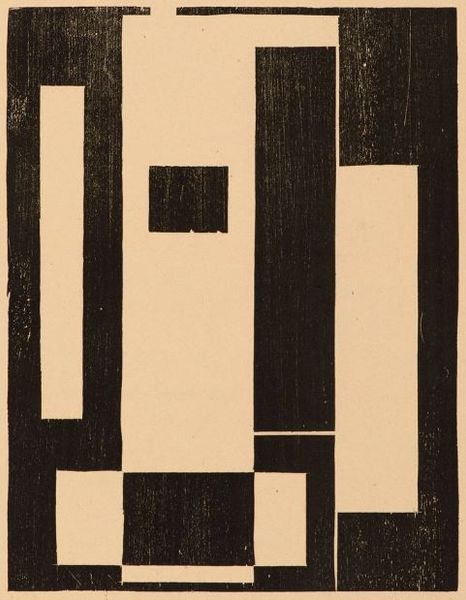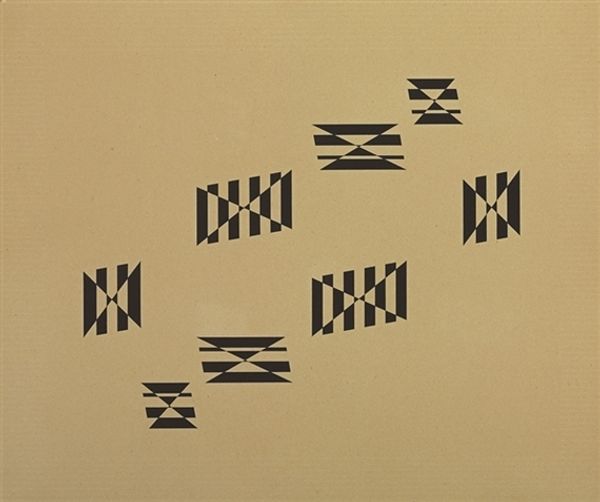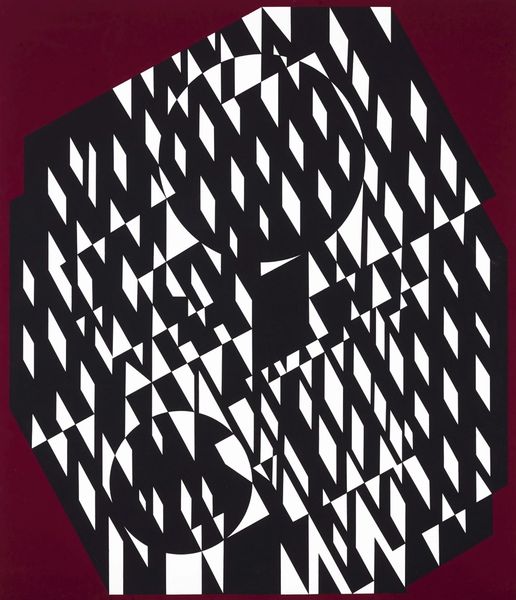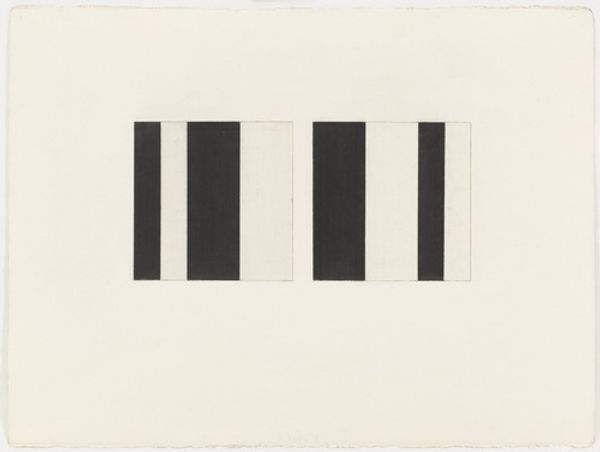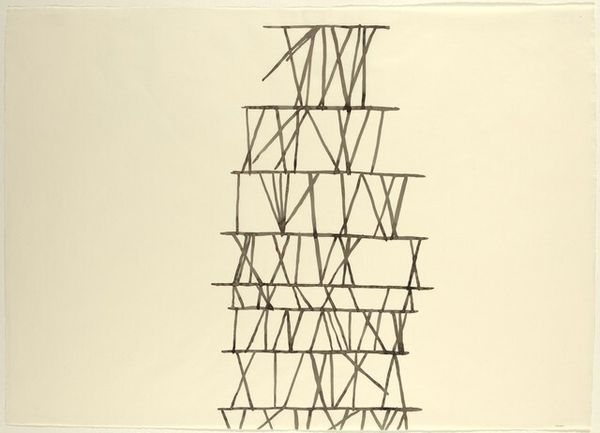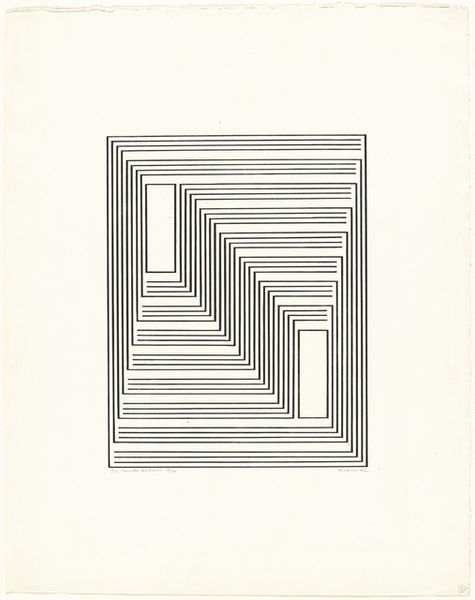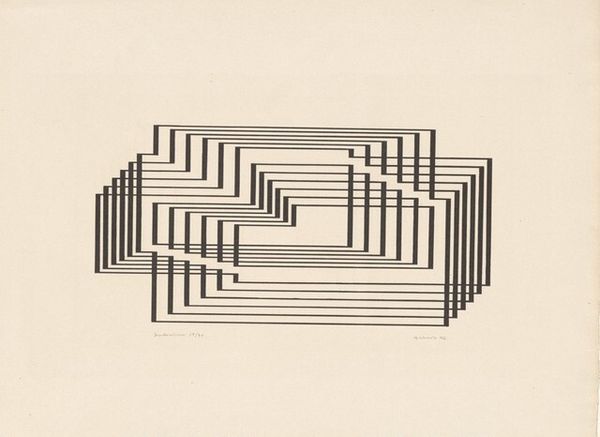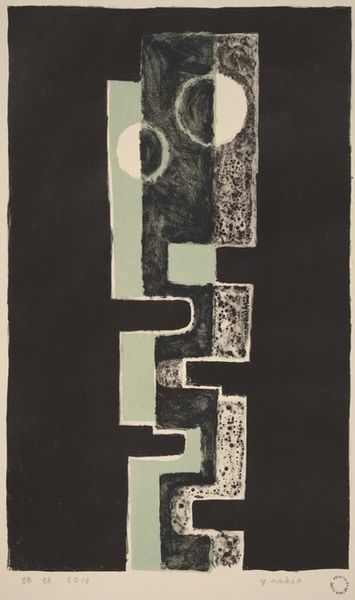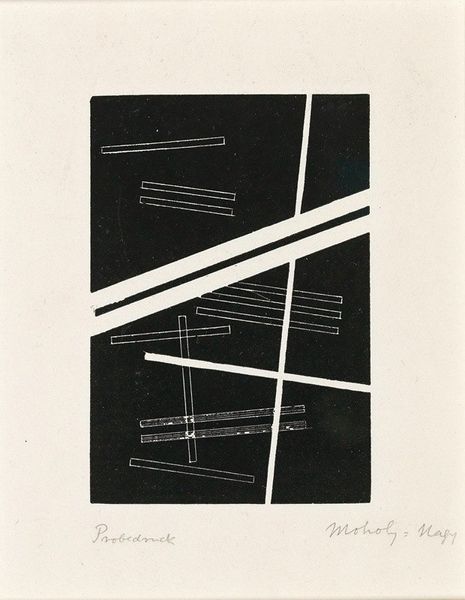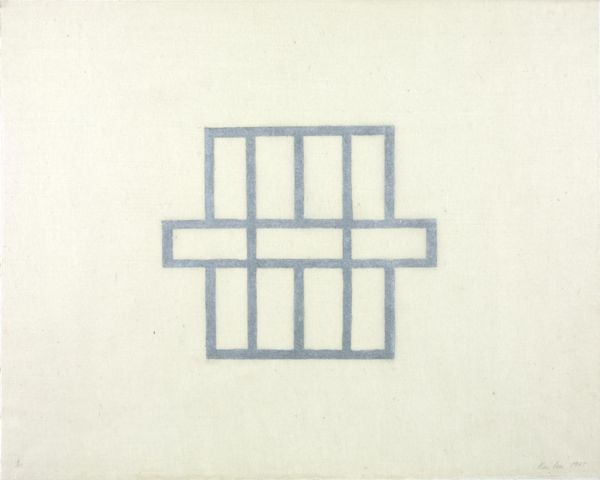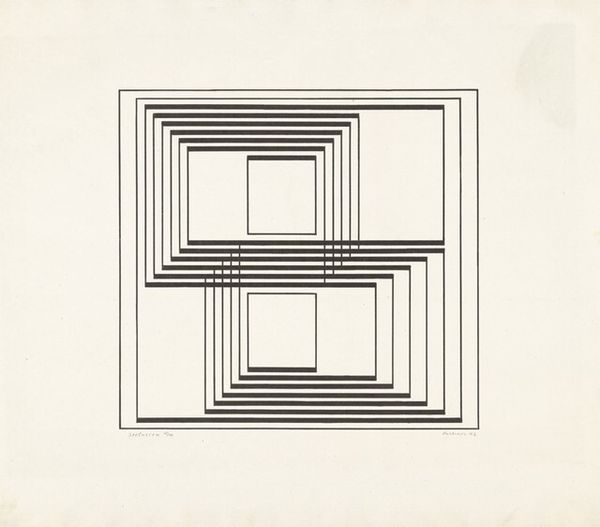
#
concrete-art
#
neo-concrete
#
typography
#
form
#
geometric
#
geometric-abstraction
#
abstraction
#
line
#
modernism
Copyright: Helio Oiticica,Fair Use
Editor: Today we're looking at Hélio Oiticica's "Limite-Lumificaças" from 1958. It features geometric shapes composed of horizontal and vertical lines, all set against a neutral background. I find the composition strangely balanced despite its asymmetry. What do you see in this piece from a formalist perspective? Curator: The arrangement is indeed captivating. Notice how the black lines, of varying thicknesses, construct fragmented geometric figures. Oiticica’s use of line, shape, and the contrast between the figure and the ground create a visual rhythm. There's an oscillation between positive and negative space. The surface operates as an interplay between figure and void. How does the spatial distribution affect your perception? Editor: I hadn't considered the positive and negative space so deliberately. Now that you mention it, the shapes seem almost to float. The background feels just as important as the black shapes themselves. Curator: Precisely. This piece aligns with Concrete Art's rejection of emotional content, emphasizing the objective qualities of the visual elements. Oiticica is less concerned with representation and more focused on the formal properties of line and space, exploring how the arrangement of these elements impacts our visual experience. Do you perceive any intentionality behind this arrangement, or does it seem entirely arbitrary? Editor: At first glance, it feels random, but the repeated forms and careful balance suggest a deliberate structure beneath the surface. There is intention there. Curator: A key aspect is how Oiticica used simple geometric shapes to evoke a sense of movement and spatial ambiguity. Its materiality amplifies the subtle spatial play that engages the observer's eye. Editor: Seeing it as a formal exercise in shape and space, rather than seeking symbolic meaning, completely changes my perspective. Curator: Exactly, understanding the visual organization illuminates Oiticica's experimentations and enhances how we read his practice within the modernist idiom.
Comments
No comments
Be the first to comment and join the conversation on the ultimate creative platform.

